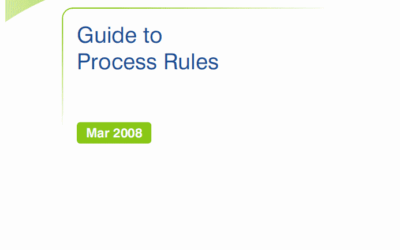One of the key selling points of adopting an SOA approach to system design is flexibility and adaptability; i.e., reduced future cost and faster time to market. The biggest flaw in this argument is that it is not SOA as a design approach that returns these benefits but rather a properly designed and effectively managed SOA Governance process that makes these benefits a reality.
Articles by: BPMInstitute.org
Optimize, Then Outsource
The outsourcing of parts of IT into Cloud has become more then a prognosis, it has become a reality. Moreover, it has become hype, a new ‘big thing’.
The outsourcing of parts of IT into Cloud has become more then a prognosis, it has become a reality. Moreover, it has become hype, a new ‘big thing’. Not many analysts and practitioners, though, have realized that this hype differs dramatically from all others: this one means that all previous hypes, intended to improve and modernize in-house IT have failed.
Seven Ways Business Activity Monitoring (BAM) Makes Your Supply Chain More Efficient
Right now, this minute, can you answer these questions about your supply chain:
Closing the Business-IT Gap Once And For All
It has been almost impossible to open a business or IT-related magazine for the past decade without seeing an article about the infamous gap between Business and IT and the misfortunes caused by it.
It has been almost impossible to open a business or IT-related magazine for the past decade without seeing an article about the infamous gap between Business and IT and the misfortunes caused by it. So, let us skip the description of these misfortunes and concentrate on the gap itself.
Guide to Process Rules
The generic term “business rule” has been used extensively in a plethora of contexts, models, and domains. Everyone agrees on its importance. At the very core, the purpose of business rules is to capture what should or should not be allowed in a business enterprise.
In Memory of Geary A. Rummler – A Giant in the Field of BPM
Geary A. Rummler.
BPMS Watch: BPMN’s Three Levels, Reconsidered
Several months ago, I got an urgent request from OMG – the organization responsible for BPMN and other BPM standards – to give a short blurb I had written a permanent URL on my website. The blurb was a promotional piece for my BPMessentials training called “Three Levels of Process Modeling with BPMN.” OMG proudly proclaims that BPMN assumes no particular methodology, but the notion of using it at three specific “levels” was just something I made up when I launched my BPMN course, to describe its value to different audiences. Now OMG needed it as a “reference” for their OCEB certifi
Is ‘Business-Driven SOA’ the way forward to SOA Success?
Why do most IT professionals when they talk of SOA talk about products not processes?
Millions of marketing dollars are spent by vendors. Consultants purport to be experts ‘delivering’ projects using SOA tools and methodologies. Yet, if SOA is successful in delivering business change why don’t we see measureable evidence of this change?
Why do most IT professionals when they talk of SOA talk about products not processes?
BPMS Watch: BPM Standards in Perspective
Nobody really cares about standards… until suddenly they do. When a standard reaches some threshold of adoption, a tipping point is reached. Then, if you’re not on the standard you’re proprietary. Legacy. A dinosaur. Not where you want to be.
Are you on top of your Grid?
“Four years after the worst electric power blackout in United States history, the nation’s electric companies can now be punished if it happens again. Reliability standards for the nation’s power system quietly got teeth Monday, marking a major shift in how the U.S. electric industry is regulated. Utilities now face fines of up $1 million a day if they fail to meet any of 83 standards intended to keep the nation’s power grid healthy. But compliance was voluntary.






















